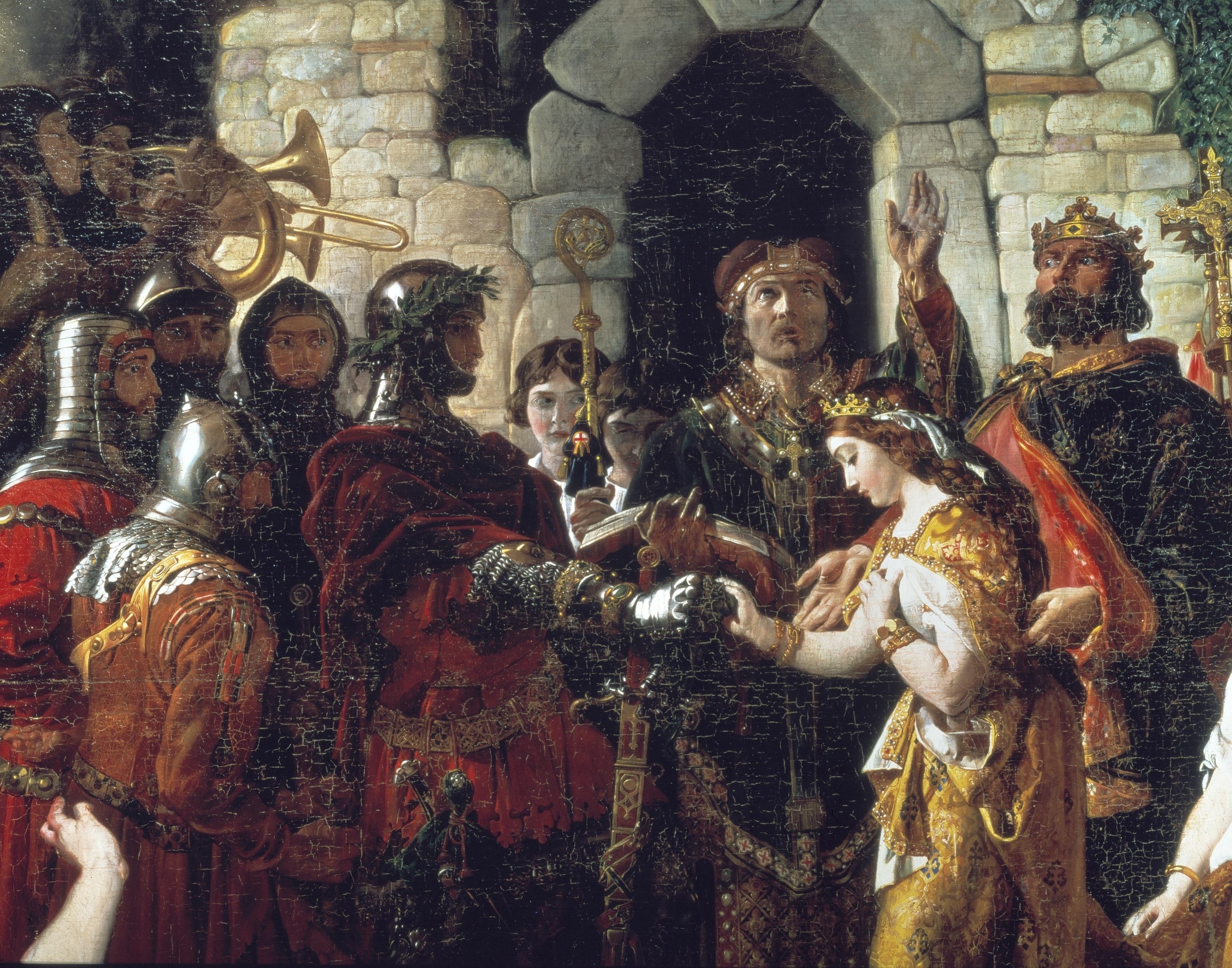
The Marriage of Strongbow and Aoife by Cork born historical painter Daniel Maclise (1806-1870) at the National Gallery of Ireland
Aoife, princess of Leinster, wed the English knight known as “Strongbow” on August 25, AD 1170. Aoife’s father, Diarmait Mac Murchada, had lost his seat as king of Leinster and sought military aid from England to reclaim it. Richard de Clare, a minor knight at the English court, responded to the Irish king’s request for aid; Diarmait promised that whichever knight helped him regain the throne would be given the his daughter Aoife as wife. Richard brought 1,200 fighting men with him and won the battle at Waterford, Ireland on August 23. He and Aoife were married on August 25 on the shore of the River Suir beneath a great oak tree that came to be known as “Strongbow’s Oak.” (The painting above shows the couple being wed in front of the stone tower that was built later alongside the oak.)
According to Irish law at that time, both the man and the woman had to consent to the marriage; it is fair to conclude that Aoife accepted her father’s arrangements. Aoife led troops in battle and is sometimes known as Red Eva (Aoife Rua).
When Diarmait died the next year, Strongbow claimed the throne by right of his marriage to Aoife and began the English occupation of Ireland which continued until the Irish Free State was established in 1922.
Aoife had two sons and a daughter with her husband Strongbow, and via their daughter, Isabel de Clare, within a few generations their descendants included much of the nobility of Europe including all the monarchs of Scotland since Robert I (1274–1329) and all those of England, Great Britain and the United Kingdom since Henry IV (1367–1413); and, apart from Anne of Cleves, all the queen consorts of Henry VIII.
Later folktales also identify Strongbow’s Oak as the location of the grave of the young woman known as the dearg-due (“red blood sucker”) who rises from the dead to seduce and kill men, lapping up their blood to sustain herself. The girl who became the dearg due was herself said to have been beaten to death by her English husband and he was her first victim when she rose from the grave as the vampire woman. The dearg due is an important character in the Come Hell or High Water trilogy.
In my upcoming project Earth to Earth, Ashes to Ashes the princess Aoife makes a bargain with the goddess Badb to be sure that Strongbow wins the battle; the English occupation of Ireland is therefore the result of witchcraft and magic. The goddess Badb is involved in creating the dearg due in an attempt to drive at least some of the English away from Waterford itself.


